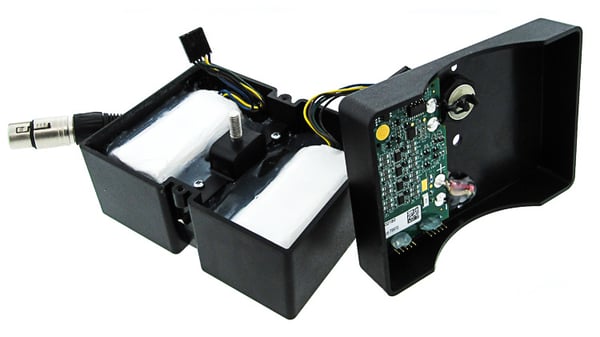Battery pack design and development can be a complex process based upon the power needs of the application. Due to the multiple steps that go into creating a battery pack, we try to work with customers from the concept stage to learn about the project's details regarding the application's power needs, size of the battery pack, and specific components that will be added. We will also need time to acquire the materials for the battery pack, to create the prototyping, and to acquire the certifications that may be necessary based on the chemistry of the battery.
Yet even with our application review and consultation with clients, development time and costs can be increased based on specific requirements that the customer requests as well as the non recurring engineering (NRE) processes. Sometimes, the costs will be significant to the point where the battery pack or product is no longer feasible. Other times, it will push product times so far out that the product will not be completed in time for the initial roll out as it may miss customer demand trends.
We can avoid many of these costs and increased development times by developing the right strategies before the development, prototyping, testing and certification phases. Figuring out the logistics for the battery pack from design concept to transportation testing, and certification can allow you to better control product roll out times and costs. Let's go over the NRE costs, certifications, and logistical requirements for standard battery packs.

Battery back designed with custom enclosure, BMS, and cable assembly.
Battery NREs, Costs, and Planning
A battery pack nonrecurring engineering aspects simply means the combination of the concept, research, development, testing and certification processes when developing new custom battery packs. The NRE is usually just a one-time cost for the initial development and design of the battery pack, materials needed, technologies, and components that will be added. For battery packs, these NREs will involve the control circuitry, bill of materials (BOM), Gerber data, plotting, enclosure manufacturing, and other factors.
Battery pack NREs can create significant costs based on the complexity of the customer's specifications. Speaking with our engineers during the battery pack scope development and refinement can help us come up with solutions that can decrease costs as the customer reviews the project proposal. Here are some NREs to be aware of that can increase battery pack development and product costs:
Battery Enclosure Designs
While seeming like a quick design development, the enclosure can raise costs to the point where the battery pack price is outside your budget. Off-the-shelf solutions can keep the price within a customer's means. In addition, enclosures that are inside the product that will not be seen by consumers can also have simple designs. However, there are certain occasions where a custom enclosure design will help market and sell the product. Both the battery enclosure and the tooling will need to be created, which can increase project timelines.
IP Rating
The IP rating goes hand in hand with the battery enclosure development. IP stands for Ingress (or Internal) Protection mark. This rating involves how watertight, dust resistant, and dirt resistant that the battery enclosure will be. Different industries will require specific IP ratings for battery pack enclosures in products.
Some customers will think that by seeking out the highest IP rating will be best for their battery pack enclosure to meet all certification levels. However, the more that is added to the battery pack will drastically increase the costs, along with the weight of the battery pack. Also, the type of product that is being created may not need to reach such high certification levels.
Potting
Potting a battery pack involves filling the enclosure completely or partially with certain compounds that will prevent moisture, vibration, and shocks from occurring to the housed batteries. It can also prevent solvent and chemical penetration by creating a seal. Potting is a very expensive process. It may be necessary for certain products, especially those that will be used in environments with higher-than-usual levels of moisture and humidity, such as maritime operations.
Planning for NRE Development Times and Costs
Many of these NRE costs are controllable if proper planning is put into place at the onset of the project scope creation. One of the main things to understand is that if there are no marketing or cost specifications to give to the engineer, they will develop the battery pack without implementing any cost savings or taking into consideration the manufacturability of the battery pack. To avoid this issue, providing valuable input regarding the allowable costs for the battery pack can help control scope creep during the manufacturing of the battery pack.
Standard NRE time frames will fall within 4-6 weeks for the development, prototyping, prototype testing and assembly of the prototype. It can take up to 14 weeks if creating the battery pack with a plastic design. The potting, IP, and enclosure designs can take 3-10 weeks. Implementing cost controls at the outset and researching the required IP specifications and certifications for the product and battery pack can help cut down on both costs and lead times. With these details provided to the engineers, it helps to streamline the process and speed up the scope review and development process.
Certifications for Battery Chemistries and Products
Lithium-based batteries will require transportation certification. Safety certifications are also typically required for lithium-based batteries. Nickle-based batteries and alkaline batteries do not require this certification. Types of certifications for lithium-based batteries include:
- Underwriters Laboratories (UL)
- International Electrotechnical Commission (IEC)
- European Union's CE Marking
- UN/DOT 38.3
The best way to determine whether your product requires specific certifications is to research similar products. Looking into trade associations and contacting independent certifications and standards organizations can provide additional information regarding whether your product will need certain certifications and the types of design specifications that will have to be implemented for the battery pack. Often, these organizations will also have resources for companies as they can search for any additional details that are specific to the product and industries that the application will be used in.
Keep in mind that the battery pack manufacturer will need to be informed about the certification process so that the correct number of prototypes can be created that will undergo testing. Certification organizations will inform the manufacturer how those battery packs should be presented, such as sealed and unsealed, as well as how many will undergo destructive testing. In addition, certain employees will also require certification to pack and ship lithium-based battery chemistry. For example, to pack lithium batteries that will be transported by air, the company will need to have an employee receive certification through the International Air Transport Association (IATA). The employee will have to undergo a test to become certified, as this can increase product lead times if the certification process is held off until after the battery pack is completed.
Logistical Considerations
Companies should also consider logistics when it comes to battery pack development, prototypes, transportation testing, certifications, and production. Some manufacturers will pass off part of the process to other companies as they may not design or build certain aspects of the battery pack components. Finding out which parts of the development and production that will be performed in-house with the manufacturer, and which components will be passed off to other shops, will help a company understand what additional costs and lead times will be needed.
Some companies will handle all the design, development, prototyping, and manufacturing of the battery packs, then send the prototypes off to be tested and signed off before starting the production line. This process allows them to better control lead times and provide any required design changes that may be necessary so that the battery pack manufacturing process will be feasible for the product.
Summary
Partnering with a battery pack manufacturer and providing honest and open communication can help both your company and the engineers understand the application and power requirements for the battery pack. It will also allow the manufacturer to come up with alternatives when it comes to battery pack materials, chemistries, and components to help a customer find additional cost savings as well as lower the lead times for the creation of the custom battery pack. If something goes wrong with the initial prototype testing where the design must be modified to meet industry standards, they can immediately get in touch with the customer. They then can move forward with the production phase by manufacturing a battery pack that meets the product's specifications, certification standards, and company expectations.
Key Takeaways
- NRE costs are significant but controllable: Nonrecurring engineering (NRE) covers design, development, testing, and certification, and can heavily impact budgets and timelines if not planned carefully. Early cost and manufacturability discussions help avoid scope creep.
- Enclosure, IP rating, and potting drive cost and time: Custom enclosure designs, higher IP ratings, and potting processes can drastically increase both expense and lead time. Choosing off-the-shelf solutions or right-sized specifications can reduce these impacts.
- Certification is critical for lithium-based batteries: Standards such as UL, IEC, CE Marking, and UN/DOT 38.3 are often required, while nickel and alkaline batteries typically avoid these. Certification testing also demands multiple prototypes and can extend schedules.
- Logistics and in-house capabilities affect timelines: Manufacturers that manage design, development, and testing internally generally control costs and lead times better than those outsourcing key steps. Understanding who handles what helps set realistic expectations.
- Collaboration shortens lead times and reduces risk: Open communication with manufacturers ensures engineers design to both performance and cost targets, while allowing quicker adjustments if prototype testing reveals issues.
















